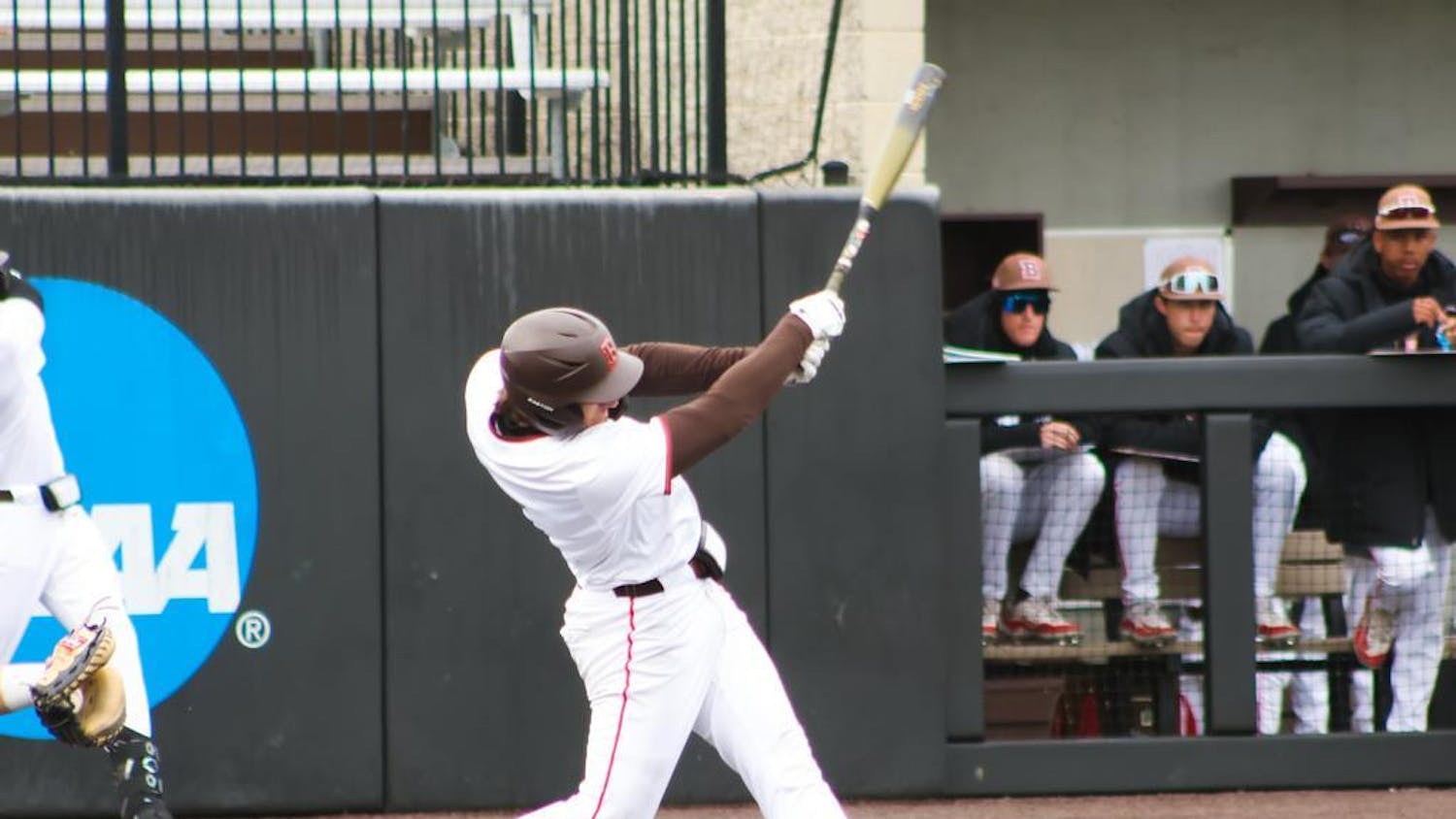Rick Porcello’s American League Cy Young Award continues a year that could not get any stranger: First, the best team in NBA history, up 3-1 in the finals, loses to a team from Cleveland. Then, the Cubs win the World Series for the first time in 108 years. After that, a reality TV star (whose name shall not be printed in this column) wins the presidential election. Finally, Porcello, who last year was a bust of enormous proportions, is named the best pitcher in the American League. I should buy a lottery ticket before this wild year ends.
Porcello came to the Red Sox in the spring before the team’s 2015 train wreck. That year, the Sox finished in last place for the second consecutive year and third time in four years, and much of the blame fell on the team’s underperforming offseason acquisitions — especially Porcello. The Red Sox signed him to a four-year, $82.5 million contract, and with each start the righty made, the city of Boston collectively gasped as that money seemed to go down the drain.
He finished the 2015 season with 15 losses and an ERA just under five. Some attributed his poor performance to a nagging injury. Others said he needed more time to get used to the new atmosphere in Boston. Remaining critics said that his solid 2014 season was an aberration — he just wasn’t a good pitcher to begin with. Whatever the reason for his unimpressive pitching last season, he was still surprisingly composed on the mound and in interviews. While he was being crucified by an entire city, Porcello was a class act and gave honest, articulate answers to radio and television show questions.
Porcello continued the trend of players who needed a grace period to get used to Boston. Rarely will a player succeed in his first year after arriving on the Red Sox’s roster from another team, especially if he’s getting the big bucks. Carl Crawford, Josh Beckett and Hanley Ramirez are just three examples of former All-Stars seemingly forgetting how to play baseball for their first season in Beantown. For most, the game comes easier as time goes on; for others, the road stays rocky.
The team clearly stated its reservations about Porcello by signing David Price before the 2016 season. But Porcello responded to his initial Boston woes with a stunning season. Porcello in 2016 was the epitome of consistency and dependability, pitching 223 innings and finishing with a record of 22-4 with a 3.15 ERA.
Porcello’s success shows that the Red Sox may have been a little hasty in giving former General Manager Ben Cherington the boot. He either brought in or cultivated the talent that proved essential to the Red Sox this year: Porcello, Ramirez, Mookie Betts, Xander Bogaerts and many others. Had the Red Sox kept Cherington another year, the criticism that boiled to the surface last year would have taken the form of praise after seeing how his projects paid off in 2016. The fickle Boston fans and media can turn on old favorites on a dime, and Cherington, who brought in a Cy Young winner and cultivated an MVP runner-up, fell victim to Boston’s need to find someone to blame for losing teams.
While Porcello has never had the stuff that will blow away hitters, he located his two-seam fastball on the corners of the plate and countered his heater with effective breaking pitches. The movement on his pitches wasn’t his greatest weapon this season; rather, his ability to locate his fastball consistently was his main weapon in getting outs. He used his fastball to get ahead in counts and finished at-bats with off-speed pitches down in the strike zone, primarily his slider and change-up, forcing ugly swings and weak contact. Porcello was nearly 100 strikeouts shy of the Major League lead, yet he had the best strikeout-to-walk ratio in baseball at 5.91, which speaks to the efficacy of his accuracy.
Porcello was also an outstanding pitcher with men on base. He seemed to save his best stuff for these clutch moments in games. The key was that he located his breaking pitches low in the strike zone and forced countless double plays to neutralize offensive threats. Porcello’s high win total is a function of his being a phenomenal situational pitcher. He knows the right times to be aggressive and conservative.
The Cy Young voters clearly took Porcello’s ability to pitch the Red Sox to victory into account in their decision. The only two categories that Porcello led the league in this season were wins and strikeout-to-walk ratio. He was over a point higher than the Major League’s leading ERA (Kyle Hendricks’ 2.13) and way off pace for the strikeout title. His primary asset was winning games. While the win statistic for pitchers is often not indicative of a pitcher’s dominance because it also relies on offensive production, the statistic does show a pitcher’s ability to command the game into the late innings, which is a valuable asset to any team.
After Porcello’s flop last season, who would have thought that just a year later he would have etched his name in Red Sox history as just the fourth Boston pitcher to win the Cy Young Award? Jim Lonborg, Roger Clemens, Pedro Martínez and Rick Porcello — it has a ring to it. Perhaps Porcello can succeed Jon Lester as the next legendary Red Sox pitcher.
Charlie Blasberg ’18 can be reached at charles_blasberg@brown.edu.




